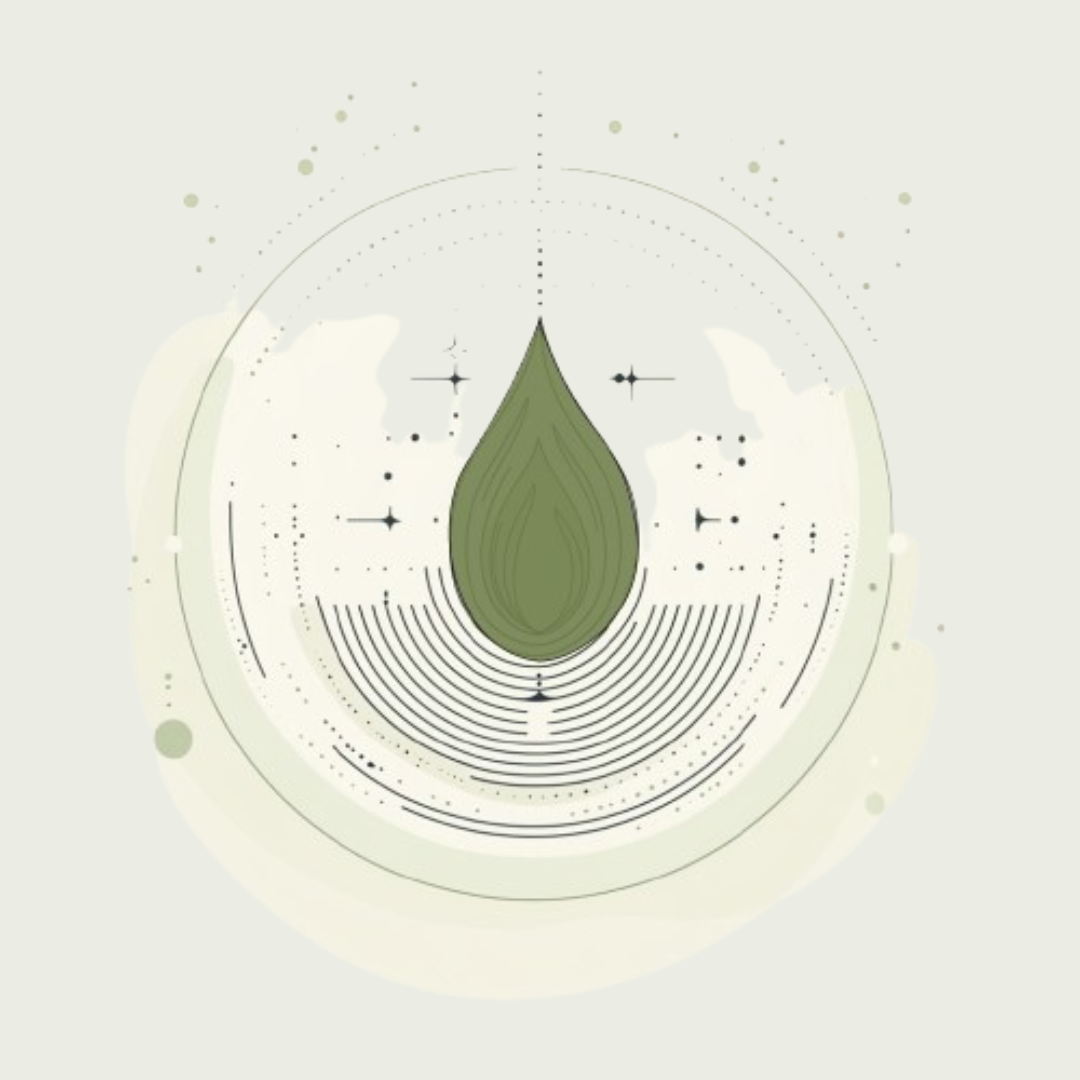Highlights
The Tridosha in Ayurveda (Vata, Pitta, Kapha) are energetic forces of nature, functional principles that help us better understand ourselves and the world. Vata, Pitta, and Kapha are essential to our physiology, so no dosha is better than or superior to any other. Each has a specific set of functional roles to play in the body. That said, when the doshas are out of balance, they can wreak havoc on our health.
The entire system of Ayurvedic healing relates to these three Doshas. This article explains these natural forces, discussing how they can affect our health and life.
The Ayurveda Elements and the 3 Doshas
Vata, Pitta and Kapha are the three types of Doshas, or primary functional energies in the body. Vata is related to wind. Pitta is related to fire and Kapha relates to water. These Doshas are related to the elements of nature. It is commonly believed that there are five elements of nature. These five elements are:
- Earth (Prithvi)
- Air (Vayu)
- Water (Jala)
- Fire (Teja)
- Space (Aakash)
Vata, Pitta, Kapha have a strong relationship with the elements of nature. The relationship is defined below:
- Vata Dosha is related to air and space.
- Pitta Dosha is related to fire and water.
- Kapha Dosha is related to earth and water.
What is Vata Dosha?
Vata dosha is the Ayurvedic element associated with air and space. The nature of this dosha is light, cold, and dry. It governs the movement and processes in our body and mind, demonstrating processes such as the flow of blood, elimination of wastes, breathing, the nervous system, joint movements, and the occurrence of thoughts.
Also read: Guide to Managing Vata Dosha
What is Pitta Dosha?
Pitta dosha is based on fire and water elements. The nature of this dosha is hot, light, sharp, fluid, oily, and mobile. Summer and its hot and sunny days are often associated with Pitta. It affects the digestive system, skin and complexion, body temperature, and metabolism.
Also read: Guide to Managing Pitta Dosha
What is Kapha Dosha?
Kapha dosha is the Ayurvedic element associated with water and earth. The nature of Kapha is slow, moist, cool, heavy, smooth, oily, and steady. Apart from that, Kapha embodies lubrication, stability, and structure in the mind and body.
Also read: Kapha Dosha Guide: Everything You Need to Know
The Innate Nature of the Doshas
It is crucial to understand the qualitative nature of Kapha, Vata, and Pitta Doshas.
- Vata being formed of air and space is dry, cold, rough, light, clear, mobile, and subtle.
- Pitta is formed of fire and water, and thus it is hot , light, sharp, oily, liquid, and mobile.
- Kapha is formed of earth and water and is heavy, slow, smooth, oily, soft, stable, and cloudy.
Based on the qualitative nature of the Doshas, Ayurveda types of bodies can be defined. This is the constitution of an individual that is decided based on the predominant Dosha. Each Ayurveda body type has a specific body constitution based on the dominant Doshas. There are three main Ayurvedic body types – Vata, Pitta, and Kapha.
Vata Body Type
Individuals with Vata body type have a predominant Vata Dosha with more qualities and characteristics of Vata. People with Ayurveda body type of Vata are usually slim and energetic. They are usually creative individuals and can think out of the box. Their mood can often be influenced by the weather, as well as the food taken. The following are some of the powerful qualities of the Vata type body:
- Quick learner
- Creative minded
- Can multitask
- Kind by nature
- Flexible
- Slim
The counter qualities of the Vata constitution are:
- Emotional turmoil
- Susceptible to anxiety
- Sensitive to the cold weather
- Appetite can vary, and digestive concerns may crop up
- Poor blood circulation
- Sleep concerns
Pitta body type
The pitta type body has a combination of fire and water characters. These are athletic individuals who are usually well-built. They have good leadership abilities and may appear aggressive by nature and goal-oriented. The strong qualities of the Pitta-type constitution are:
- Intelligence
- Quick learners
- Motivated and goal-oriented
- Strong leadership qualities
- Good circulatory system
- good metabolism
- Healthy skin and hair
- Determined and tenacious
The counter qualities of the Pitta-type body can be:
- Lack of patience
- May get into conflicts quickly
- May get hunger pangs and be subject to mood swings
- Sensitive to hot weather
- Common health concern faced is inflammation
Kapha body type
The Kapha body type is earthy with the water element in it. This makes them grounded and more stable. These are powerful individuals and caring by nature. They not only get things done but help and support others too.
Common qualities of individuals with Kapha body constitution are:
- Caring in nature and showing empathy
- Trust others
- Calm, composed, and patient
- Wise and mature
- Happy
- Strong bones and joints
- Immunity is usually strong
The counter qualities of the Kapha Ayurveda body type are:
- Slow metabolism can make them sluggish
- They can end up gaining weight fast
- Tend to oversleep
- Prone to developing respiratory concerns
- Higher risk of heart diseases
- Need motivation or may get depressed
Apart from the three ayurvedic body types described, the other body types can be Vata-Pitta, Pitta-Vata, Pitta-Kapha, Kapha-Pitta, etc. The combination occurs when more than one Dosha is dominant. The qualities of body type in Ayurveda are also a combination of two different types.
One more Ayurveda body type is the Tridoshic type, where all three Doshas are perfectly balanced. A person with this body type is often steady and in perfect health. The forces of the three Doshas balance each other contributing to overall good health.
Also read: Ayurvedic Skin Care Guide on Skin Types
The 3 Doshas and their Functions
Each of the three Doshas has specific functions based on the elemental forces they are made of. Vata governs movement, Pitta governs digestion, and Kapha governs structure. Each of the Doshas performs specific functions related to the body.
Vata Dosha’s Functions
Vata Dosha handles all movements within the body. It is typically present in the lower abdominal region below the navel.
Vata helps ensure the smooth functioning of processes such as respiration and maintains the health of Dhatus or tissues, also managing all natural urges like hunger, thirst, urination, excretion, sleep, etc.
Vata ensures the smooth functioning of the heart, contractions of muscles, the flow of blood, and communication from the brain through the nerves to the entire body.
Pitta Dosha’s Functions
Pitta Dosha handles the body’s metabolism and smooth functioning of the digestive system.
It is believed to be located above the navel's upper abdominal region.
Pitta is associated with fire, ensuring normal body temperature. It creates intelligence and bodily luster. It is associated with transformation and thus governs emotions and experiences.
Kapha Dosha’s Functions
Kapha provides the body with vigor, vitality, and immunity. It is believed to be in the chest region.
It can ensure the stability and strength of the bodily structure. Since it has the water element, it hydrates the tissues and cells. It also keeps the skin moisturized. It offers lubrication of the joints, allowing them to function well.
Imbalance or Vitiation of the Doshas
When the Doshas are well balanced, it ensures good health. However, it is often possible that there would be vitiation in the Doshas, leading to an imbalance. There are various reasons for Dosha imbalance, for example:
- Improper diet, where the food eaten is against the prevailing Dosha.
- Poor lifestyle management leading to improper daily routines.
- Stress and tension that cause anxiety or trauma.
Whatever the reason, when any of the Doshas get vitiated, it can disturb the state of harmony. This can directly impact health. Vitiation in any Dosha leads to excess Dosha that causes specific symptoms or health conditions. The disturbance caused is unique and may vary from one person to another. Let us see what vitiation in any of these Doshas would cause.
Effects of Vitiated Pitta
Vitiation in the Pitta Dosha leads to inflammatory reactions within the body. This affects organs across the body.
On a mental level, the Pitta imbalance can lead to a negative state of mind, creating jealousy, frustration, anger, and a tendency to criticise others. Vitiation can affect digestion and it can lead to excessive hunger and thirst. Discoloration of skin and discoloration in the urine and stools can occur. It can also cause sleeplessness.
Exposure to hot weather, the heat of the sun, and hot food can aggravate Pitta. Sour, salty, and pungent foods worsen Pitta Dosha. Spicy food and potatoes can vitiate this Dosha.
Effects of Vitiated Kapha
Kapha Dosha vitiation causes congestion in the tissues and organs of the body. Apart from physical stagnation, it also causes stagnation of the mind and coldness.
Body flabbiness and white skin coloration are some effects of this imbalance. Breathing problems are commonly caused by Vata imbalance. While the other two Doshas when vitiated cause sleeplessness, Kapha vitiation causes lethargy and excess sleep. It causes excessive possessiveness, stubbornness, and resistance to change on the mental plane.
Cold and wet weather, and heavy and fatty foods (including oils, nuts, and processed foods) can aggravate this Dosha.
Effects of Vitiated Vata
When the Vata Dosha is vitiated, it may cause metabolic or pathological dryness in the body. If the Vata levels fall below the optimum level, one may feel weakness, speech-related concerns may crop up, and a state of confusion may also be induced.
Any vitiation or imbalance in the Doshas should be corrected. There are different ways of doing this. Medication using herbal Ayurvedic remedies, lifestyle changes, dietary changes, exercise, practising Yoga and Pranayama, and undergoing therapies can help correct Dosha vitiation.
How to Balance Vata, Pitta, Kapha?
According to Ayurveda, if the Dosha vitiation has caused too much cold, the opposite quality of heat can help control and reduce the vitiation. Let’s see how this principle works.
Optimising Vata Dosha
The opposites of Vata are moist, warm, oily, and smooth.
To correct Vata vitiation, it’s advisable to prefer a warm and moist environment, not just physically but emotionally.
One can look for emotional comfort. Sweet fragrances and sweet music can also play a role in correcting this vitiation.
Apart from that, eat soft and warm food, such as cooked vegetables, berries, eggs, and dairy products. Use more sour, salt, and sweet tastes in the food.
Optimising Pitta Dosha
The opposites of Pitta are dry, soft, and cool.
To balance the vitiation, it’s advisable to seek a cool place.
You can rest on a soft bed in a relaxed environment. Look for soft emotional support. Have food that is light, sweet, and cold. Fruits, vegetables, and salads can be included in the diet. Also, the food should be sweet, astringent, or bitter. Consume naturally sweet foods and avoid processed and refined food items.
Optimising Kapha Dosha
The opposites of Kapha are warm, dry, light, and active.
To bring balance, seek a warm and dry environment. Look for active emotional support from your dear ones. Lead a physically active life.
Your meals must include foods with pungent, astringent, or bitter tastes. Eat spicy and acidic foods such as whole grains, eggs, low-fat cheese, and include spices in the diet.
Exercise and physical activity help improve blood circulation and strengthen immunity.
Ayurvedic Medicine for Vata, Pitta, Kapha
All three Doshas can be corrected by incorporating specific herbal remedies and recipes. Kerala Ayurveda has a range of Ayurvedic medicine for Vata, Pitta, Kapha Doshas. In this section, we discuss those medicines, take a look.
Kapha Dosha Medicine
Here’s a list of Ayurvedic products that can help manage your vitiated Kapha:
- Anu thailam: Anu Thailam is one of the effective oils mainly used for balancing vitiated Kapha, and to find relief from nasal congestions and blocked nose.
For usage, you can lie comfortably on a bed, pour one to two drops of the oil in your nostrils, and take a big sniff. When the oil reaches your throat, you can spit it out.
Doing this once daily can help maintain a healthy balance of Kapha in your body. -
Karpooradi thailam: Karpooradi Thailam is another Ayurvedic oil for Kapha Dosha and nasal congestion. It is to be applied and rubbed thoroughly on the chest.
Just take the oil in small quantities and rub it on your chest. Regular usage will help balance the vitiated Kapha in your body. - Triphala sparkles: Triphala sparkles are Kerala Ayurveda’s effervescent tablets that you can carry anywhere and pop in a glass of water. After the bubbles come up, sip down the drink and reap the benefits of Triphala’s Kapha optimizing properties.
Vata Dosha Medicine
Here’s a list of Ayurvedic products that can help balance the vitiated Vata in your body:
- Dhanwantharam Gulika: Kerala Ayurveda’s Dhanwantharam pills can be of great help for balancing Vata Dosha, and improving digestion and stimulating appetite.
For dosage, it’s advisable to consult an Ayurvedic physician. - Bala Thailam: The primary ingredients of Bala Thailam are Guduchi, Rasna, and Devadharu. When used correctly, Bala Thailam can help calm your senses and optimize the imbalanced Vata levels in your body.
Additionally, Balarishta and Dhanwantharam Kwath can help balance Vata Dosha. The products are available on Kerala Ayurveda.
Pitta Dosha Medicine
Here’s a list of Ayurvedic products for balancing Pitta Dosha:
- Guduchyadi Kwath
- Drakshadi Kwath
- Chandanasavam
- Alsactil
- Avipathi Churnam
All these products are available Kerala Ayurveda and can significantly help optimize the vitiated Pitta in your body. For further details about the usage of the products mentioned above, connect with us.
Exercises Based on Ayurvedic Body Type
You can regulate your exercise and activities based on the Dosha type. This will help you improve your health and correct any vitiation in the Dosha.
Exercises for Vata Body Type
Vata-type people need to be physically active on the go. Movement is a key characteristic of this Dosha. Hence, the exercise should involve cycling, jogging, running, walking, swimming, Yoga Asanas involving movement, dance, etc.
Exercises for Pitta Body Type
Pitta being a heat-generating Dosha, requires maintaining lower temperatures. Exercise increases heat. Therefore Pitta type people should avoid over-exercise.
They should exercise early in the morning or late evening when the weather is cool. Pitta is competitive and playing team sports can be helpful. Self-massage with a cooling oil can be helpful.
Exercises for Kapha Body Type
People with predominant Kapha may need motivation to workout.
You can try finding a friend or family member to join you and motivate you to exercise. Practice more cardio exercises to improve health. Yoga is good for the body and should be practised. Breathing exercises are needed since respiratory problems are common in this type.
Key Takeaways: Befriending the Doshas in Your Life
The Doshas in your body are your primary functional energies. They are part of your body and will be with you for the rest of your lives. We rarely find Tridoshic persons with the 3 Doshas in perfect balance. Most people have a bi-doshic nature.
The positive and counter-positive traits of these Doshas can affect our lives and thus, we should work towards optimizing them.
Spiritually, these Doshas are our friends for life. We need to befriend these Doshas, understand their qualities, and adapt ourselves to live with these friends.
So what does befriending a Dosha entail?
One should understand the qualities of their predominant Dosha(s) and know what may aggravate or calm the Dosha(s).
For example, if your body type is Pitta, it is heat-dominated. So you should take care during hot weather and avoid hot and spicy food. Use the principles of opposites to calm down your Dosha.
We hope the information in this blog helps you understand the 3 Doshas, how they may impact your life, and how you can balance and befriend them.




